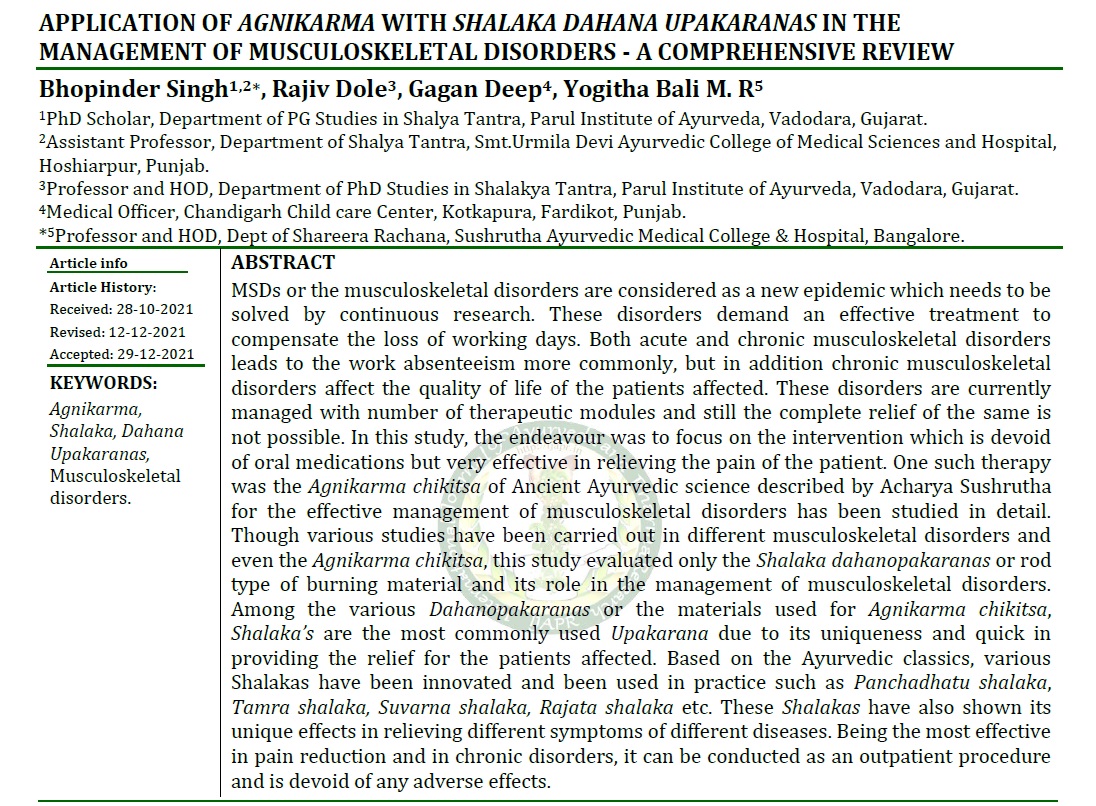Application of Agnikarma with Shalaka Dahana Upakaranas in the Management of Musculoskeletal Disorders - A Comprehensive Review
Abstract
MSDs or the musculoskeletal disorders are considered as a new epidemic which needs to be solved by continuous research. These disorders demand an effective treatment to compensate the loss of working days. Both acute and chronic musculoskeletal disorders leads to the work absenteeism more commonly, but in addition chronic musculoskeletal disorders affect the quality of life of the patients affected. These disorders are currently managed with number of therapeutic modules and still the complete relief of the same is not possible. In this study, the endeavour was to focus on the intervention which is devoid of oral medications but very effective in relieving the pain of the patient. One such therapy was the Agnikarma chikitsa of Ancient Ayurvedic science described by Acharya Sushrutha for the effective management of musculoskeletal disorders has been studied in detail. Though various studies have been carried out in different musculoskeletal disorders and even the Agnikarma chikitsa, this study evaluated only the Shalaka dahanopakaranas or rod type of burning material and its role in the management of musculoskeletal disorders. Among the various Dahanopakaranas or the materials used for Agnikarma chikitsa, Shalaka’s are the most commonly used Upakarana due to its uniqueness and quick in providing the relief for the patients affected. Based on the Ayurvedic classics, various Shalakas have been innovated and been used in practice such as Panchadhatu shalaka, Tamra shalaka, Suvarna shalaka, Rajata shalaka etc. These Shalakas have also shown its unique effects in relieving different symptoms of different diseases. Being the most effective in pain reduction and in chronic disorders, it can be conducted as an outpatient procedure and is devoid of any adverse effects.
Downloads

Copyright (c) 2022 International Journal of Ayurveda and Pharma Research

This work is licensed under a Creative Commons Attribution-NonCommercial-ShareAlike 4.0 International License.






